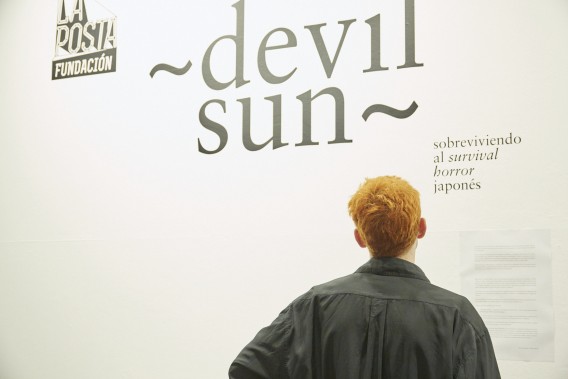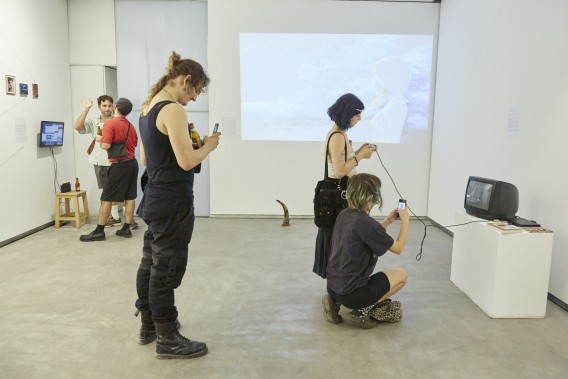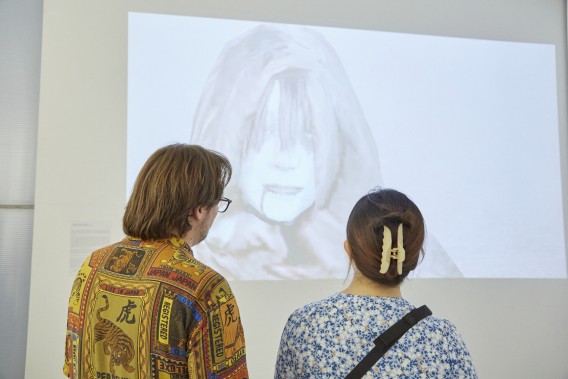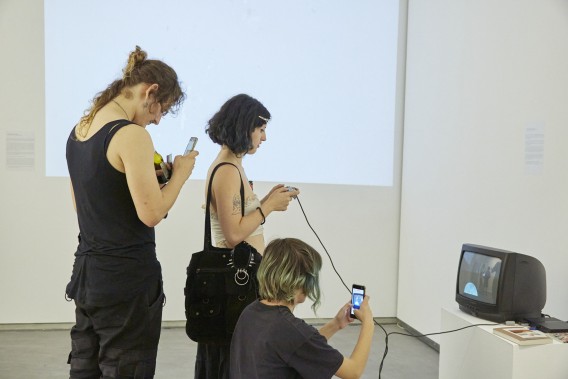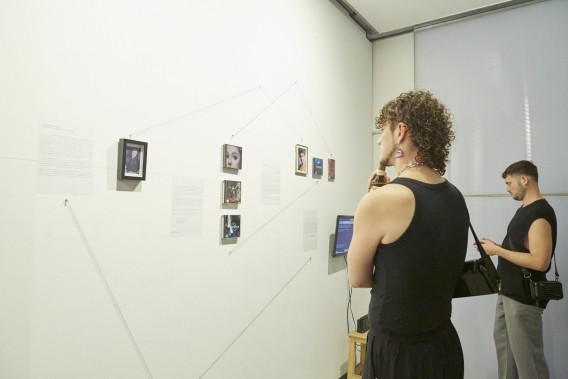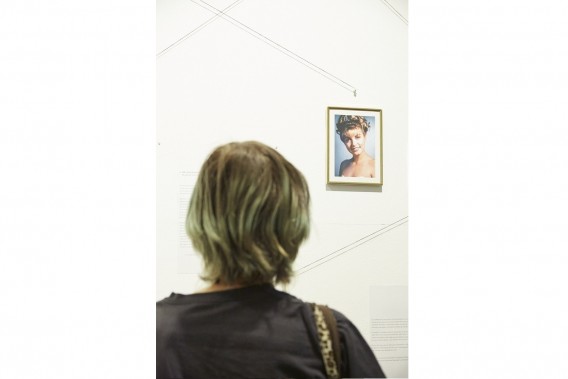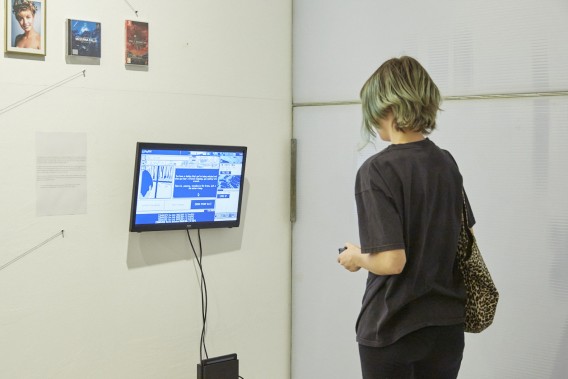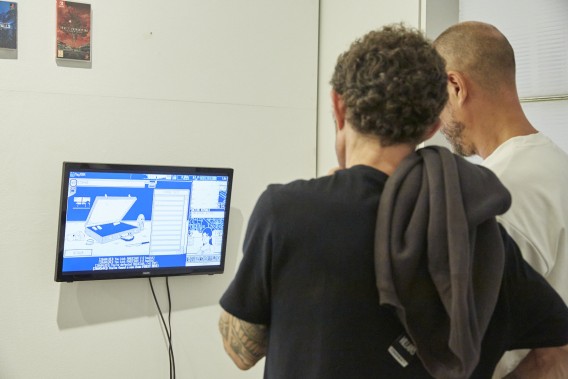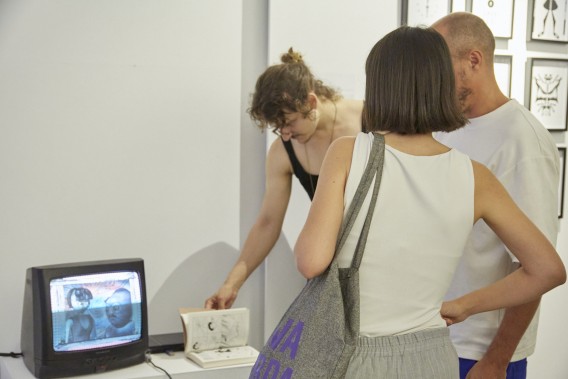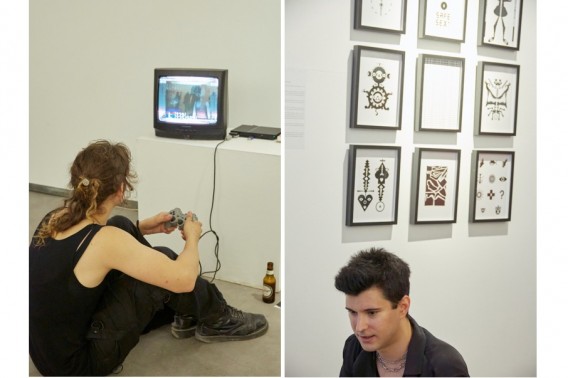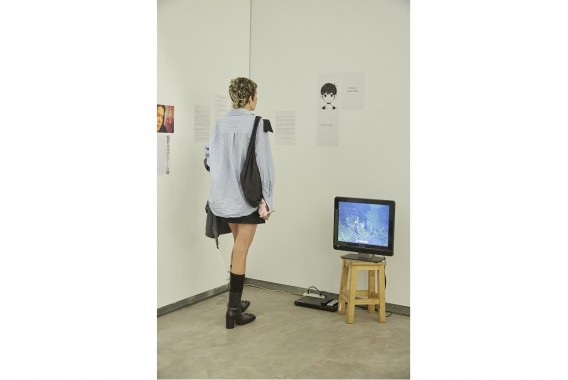In the video game exhibition “Devil Sun: Surviving Japanese Survival Horror”, curated by Aitor de Maenza and Sergio Martín, works by three great Japanese artists are on display: Osamu Sato, Kenji Eno and Kikiyama. We cannot say much about Kikiyama, as he jealously hides his identity. But, as far as Osamu Sato and Kenji Eno are concerned, it should be noted that they are not only graphic designers and video game developers, but also musicians. So they do a very comprehensive and personal work, and over the years they have built up a good reputation as artists, achieving great popularity. To the point that Osamu Sato is accessible in Spanish on a wiki on FANDOM, and Kenji Eno, who died in 2013 (hypertension) at the age of 42, although he has not reached that level of popularity (he died too soon), has become a classic. You can see the documentary tribute to his memory here. And, something very striking, he has a page on FILMAFFINITY, where he is cited as the author of a “filmography”, and in his works actors collaborated to bring his characters to life. It is clear that the borders between the media are being dissolved in “the cloud”.
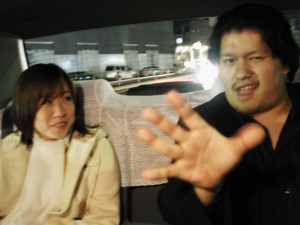
Kenji Eno (with his wife Yuka)
Kenji Eno is the author of, among others ―we will mention the most popular ones―: “D” (1995), “Trip’d” (1995), “Enemy Zero” (1998) and “D2″ (1999), all of them created for his own company Warp Inc. In these works, the protagonist is usually a girl, Laura, which is very striking, since most of her followers and users of video games are boys (as is the industry that produces them). A topic for reflection. Otherwise, he is a character who has all the merits to become a myth: a gifted child, his mother died when he was a child, then he left school, he has dedicated himself to all kinds of sectors (automobiles, telephones, hospitality…), although he has always returned to video games, which he became fond of playing with the arcades as a child, at that time with “Space Invaders” and “Pac-Man” installed. With his company Warp he pursued a completely groundbreaking commercial policy, including condoms and “herb seeds” in his products as gifts. He angered other companies in the sector with presentations and interviews in which he showed videos mocking them. In the last years of his short life he seemed to begin to calm down, he got married and had a son, but heart failure caused by hypertension ended his life on February 20, 2013.
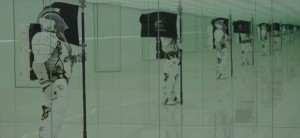
Kenji Eno: “Trip’d” (1995)
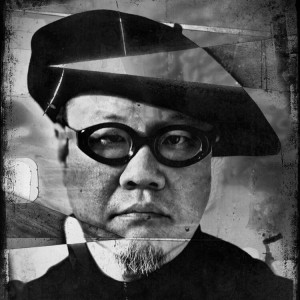
Osamu Sato
As for Osamu Sato, he is quite a bit older (he was born in 1960). He began his studies in video game programming at the Saga Art Junior College in Kyoto, and later graduated from the Kyoto Institute of Technology. Although he trained in photography in the artistic field, he later invented his own graphics system for the development of video games, based on the use of the graphic possibilities offered by the computer. Hiroski Sono, a professor at Gakugei University in Tokyo, explains this method, giving an account of its striking simplicity. We reproduce Hiroski Sono’s explanation given its interest for those who are thinking of starting out in this field:
“Opening the magic box
“The computer is a magic box. Inside it are hidden numerous graphic images. There are geometric diagrams, letters of various shapes and sizes, countless symbols, complex and mutated forms, infinite colors, fantastic plants, beasts and robots, all crammed into hidden corners of the box. By pressing the keyboard or mouse, these shapes may jump onto the screen, but in the hands of unimaginative or narrow-minded people they may not appear. And those who are not good with machines will also have trouble getting them to come out. According to Osamu Sato, there is a trick to summon these creatures, a trick he taught me. And he said he would teach it to anyone. And that is why he made this book [referring to The Art of Computer Designing, 1993, of which Hiroski Sono’s text is his introduction].
“For example, by dividing a square, rotating it, flipping it, and copying it repeatedly, a variety of shapes can be created. Shapes such as silhouettes of ancient Egyptian hieroglyphs, instant kaleidoscope creations, art deco illustrations, as well as arabesque-like letters, mechanical men, and funny aliens are all possible. And Mr. Sato shows how to create these figures with basic shapes, namely lines, arcs, squares, and circles, and he does so in a simple, clear, and above all, very logical manner. This book is an introduction to the subject for beginners, a daily guide to computer illustration, a collection of design ideas, and a compendium of Mr. Sato’s own computer artwork. All the shapes in this book are in black and white, but it is a black and white world full of potential. Just looking at the myriad manifestations of shapes is a pleasure, but for those who will use it to begin creating their own shapes, this book offers much, much greater pleasures.”

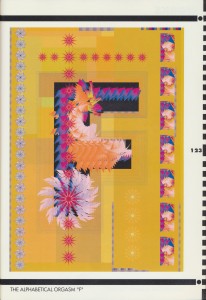
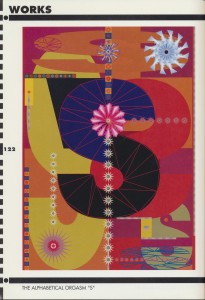

It is curious that a similar experience of computer design took place in Spain 20 years earlier, at the Computing Centre of the University of Madrid. Between 1968 and 1973, with the installation of the first electronic computer for public use in Spain (from IBM, donated by the USA), the Computing Centre of the University of Madrid was founded, directed by the mathematician Florentino Briones. Within this institution, the “Seminars on Analysis and Automatic Generation of Forms (SAGAF)” were created, where painters, designers, musicians, architects and linguists, as well as mathematicians and computer scientists, met to develop research programmes on the generation of plastic, linguistic, architectural and musical forms assisted by computer. This academic institution was a pioneer of its kind in the world. The seminars were attended by: José Luis Alexanco, Manuel Barbadillo, Elena Asins, Eusebio Sempere, Enrique Salamanca, Ignacio Gómez de Liaño, Javier Seguí, Luis de Pablo, Emiliano del Cerro, Javier Maderuelo, José María Iturralde, Soledad Sevilla (now at the MNCARS, in a retrospective exhibition curated by Isabel Tejeda, member of the board of trustees of La Posta Foundation).
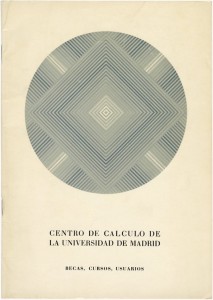
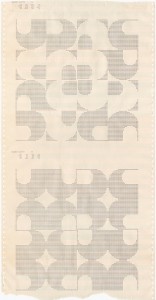
Eusebio Sempere: self-portrait made by digitizing a photograph taken by hand with a point-to-point densitometer. To achieve the sculptural character, the formula of universal gravitation is applied to each intersection point in a two-dimensional mesh [Aramis López and Jaime Munarriz: El Centro de Cálculo (1968-1973): ciencia, arte y creación computacional, Ediciones Complutense, 2021, p. 145].
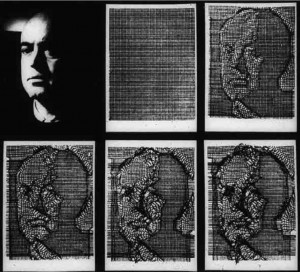
Among Osamu Sato’s most important works are:
- Eastern Mind: The Lost Souls of Tong Nou (1994) (PC)
- Chu-Teng (1995) (PC)
- LSD: Dream Emulator (1998) (PS1)
- Tokyo Wakusei Planetokio (1999) (PS1)
- Rhytmh N’Face (1999) (PS1)
In order to develop his work, in 1989 he created the company OutSide Directors Company (OSD), and 5 years later, in 1994, he was awarded by the Digital Entertainment Academy (DEA) for the Macintosh game “Eastern Mind: The Lost Souls of Tong Nou” (a full playthrough can be seen on this website here). That same year, he published the album of this game entitled “Transmigration”. In 1998, he released his first game for Play Station, entitled “LSD: Dream Emulator”, Sato’s best-known work, and along with it were also released the book Lovely Sweet Dream, based on the true dream diary of Hiroko Nishikawa, as well as the album “LSD & Remixes” and a Bonus Track “Lucy in the Sky with Dinamites”.
BREAKING NEWS: although it seems that these are little-known authors in Spain, however, we have been pleasantly surprised to find a very complete podcast about Kenji Eno (3h 22’) uploaded on July 16 of this same year 2024. You can listen to it here

Devil Sun: Surviving Japanese Survival Horror
“Eastern Mind: The Lost Souls of Tong Nou” (1994), Osamu Sato

